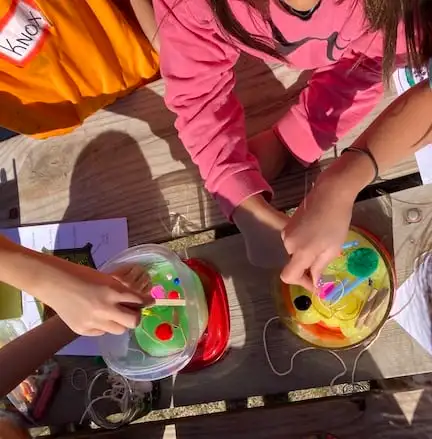Materials Required:
Green slime (for plant cell)
Yellow slime (for animal cell)
String (representing the endoplasmic reticulum)
Beads (representing ribosomes)
Buttons (representing vacuoles or nuclei)
Cardboard tubes (representing the cell wall or mitochondria)
Cut-up straws (representing Golgi apparatus or chloroplasts)
Coloring sheets with plant and animal cell diagrams
Pyrex containers or similar containers
Wax paper (for wrapping slime to take home)
Markers for labeling
Steps Involved:
Prepare the Slime: Make three batches of slime the day before the activity. Dye one batch green to represent the plant cell and another yellow to represent the animal cell. Reserve one batch for additional use if needed.
Gather and Prepare Materials: Collect various items such as string, beads, buttons, cardboard tubes, and cut-up straws to represent different organelles.
Split into Groups: Divide the students into groups of two. Assign one group to create the animal cell model and the other group to create the plant cell model using the slime and the provided materials.
Discuss Cell Differences: Briefly discuss the differences between plant and animal cells, emphasizing that plant cells have a cell wall and chloroplasts, while animal cells do not.
Create the Cell Models: Provide each group with a container of slime (green for plant cells, yellow for animal cells) and the materials. Using the coloring sheets as a guide, students will embed the items into the slime to represent the organelles.
Explain the Organelles: As students place each item into the slime, ask them to explain which organelle it represents and discuss its function within the cell. Use this opportunity to reinforce learning about each organelle’s role.
Compare and Reflect: Once the models are complete, have the groups present their cell models to the class, highlighting the differences between the plant and animal cells. Discuss how the activity helped them understand cell structure and function.
Take Home Slime: Wrap the leftover slime in wax paper so that students can take it home as a fun reminder of the activity.
Review and Summarize: Conclude the activity by reviewing the key differences between plant and animal cells and the functions of the organelles represented in the slime models.

